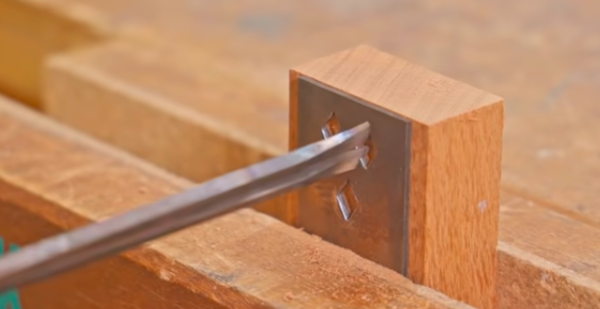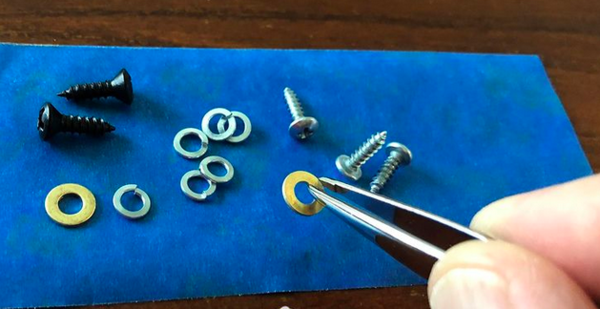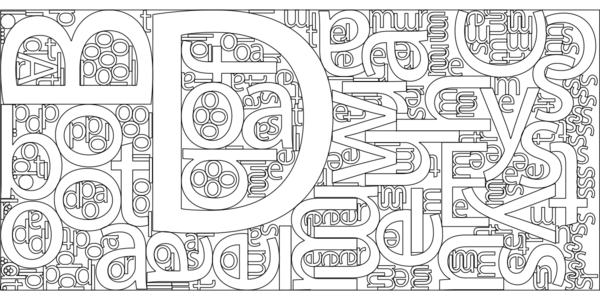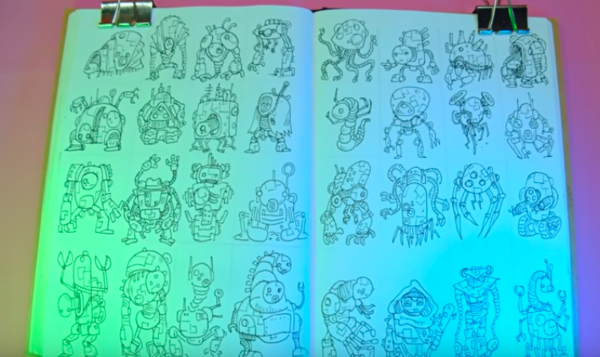Any Shaped Hole with a Regular Drill?
Gareth's Tips, Tools, and Shop Tales - Issue #101
Are you building any cool haunts or elaborate costumes for Halloween? If so, please send me pictures and I may run them in the coming weeks.
***
As always, if you have tips, tool recommendations, favorite maker jargon/slang, or feedback, please share with me.
Any Shaped Hole with a Regular Drill?

Here’s some fascinating proto-CNC cutting from the 19th century. The parser (or passer) drill was a bow-type drill, held against your belly, that used a template to cut a shape into wood (for things like inlay work). In this Pask Makes video, he forges his own parser drill and tests it out on several template designs (that he also fashioned). I especially appreciate that he uses simple tools (blow torch, belt sander, anvil) to create the drill. And the resulting drill bit, which can be chucked into any electric drill, works beautifully.
Tip Reminder: Tape for Holding Small Parts

Here’s an oldie but goodie. When you’re disassembling many small pieces of hardware, use the sticky side of a wide piece of painter’s tape to hold the parts securely on your bench. You can even organize and label them to make reassembly easier. And don’t forget the trick of sticking wide painter’s tape to your benchtop to act as a disposable palette when mixing epoxies. [Image from the Acme Tools’ Instagram]
App for Nesting Vector Files

Via Donald Bell’s Maker Update, I learned of SVGnest, an open-source, browser-based app for figuring out how many parts you can fit onto a sheet of material for laser- and CNC cutting. It can set shapes within shapes and you can even adjust for the kerfing width between objects.
Protecting SD Cards for Use in Raspberry Pi

On Andreas Spiess’ YouTube channel, the ever-clever Swede Swiss looks at options for protecting SD cards used in Raspberry Pi computers. SD cards are a cheap and common storage solution, but they’re not really designed for constant write cycles. Also, the cards can be corrupted if the Pi loses power and is not properly shut down. To overcome these issues, Andreas looks at several solutions and the option of using an SSD (solid-state drive) instead.
Watch Your Step
Several lifetimes ago, I was a manager in a hammock-weaving shop. One of the other managers was absolutely obsessed with efficiency. At the time, his constant examination of every footstep, arm gesture, and repetitive motion seemed over-the-top and compulsive. But I’ve never forgotten the basic idea he harped on: to be mindful of the steps you take, the order and location of tools and materials around you, and your execution of the task at hand – always asking yourself: “Is this the best way to do this?” This was also the guy who used to say “Work the cube,” meaning to consider and utilize the full volume of a give workspace. I’ve never forgotten that, either.
Doodling on a Theme

In a recent video, Bill Mullaney of the YouTube channel, Bill Making Stuff, offered up some useful advice on what he does when he wants to spark and sustain his creativity. In talking about the joys of keeping a sketchbook, he offers a fun drawing exercise. He creates a grid across two pages and starts anywhere on that grid by doodling a creature or object (he likes drawing robots). After doodling the first robot, he picks some aspect of it that he particularly likes and carries that over to the next square. Drawing the second bot, he carries a favorite part of that into a third square, and so on, until the entire grid is full. Wonderful idea. Cool Tools‘ Mark Frauenfelder does similar doodling on a theme.
Noteable Quotables
“Don’t fight forces, use them.” – Buckminster Fuller
“Let glue dry!” – Laura Kampf
10/28/21(Gareth’s Tips, Tools, and Shop Tales is published by Cool Tools Lab. To receive the newsletter a week early, sign up here. — editors)










